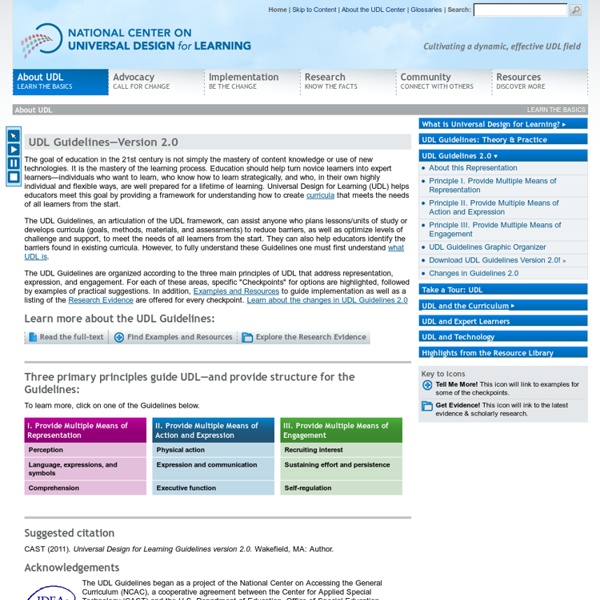The Open Classroom
Like automotive models, women’s hemlines, and children’s toys, pedagogical fads come and go, causing an immediate stir but rarely influencing teaching practice in any significant way. The notion that every innovation dreamed up by reformers inside and outside public schools makes its way into the nation’s classrooms is popular among those hunting for reasons to malign the schools. But it is crucial to distinguish between mere intellectual chatter and ideas that provoke substantive change. Where on this spectrum does the idea of the “open classroom” lie? At first glance, it would seem to be just another fad. It burst onto the American education scene in the late 1960s, only to fade away by the late 1970s.
Bloom’s Digital Taxonomy Resources
As part of preparing for a series of presentations at various conferences this year, I have developed six quick sheets for Bloom’s Digital Taxonomy. These resources outline the different taxonomic levels and provide the Digital Taxonomy Verbs with some (this is not exhaustive) possibilities for classroom use. For the complete Bloom’s Digital Taxonomy go to the Educational Origami Wiki @ Here are the quick sheets:
Standards Organizations
Who’s responsible for setting the standards for the World Wide Web and the information technology universe in general? Here are some of the major players. W3C (World Wide Web Consortium) The W3C is the source for most of the recommendations that concern web developers. They produce recommendations for the implementation of such technologies as XHTML, the Document Object Model, and Cascading Style Sheets.
Universal Design for Learning
Universal Design for Learning (UDL) is an educational framework based on research in the learning sciences, including cognitive neuroscience, that guides the development of flexible learning environments that can accommodate individual learning differences.[1] Recognizing that the way individuals learn can be unique, the UDL framework, first defined by the Center for Applied Special Technology(CAST) in the 1990s,[2] calls for creating curriculum from the outset that provides: Multiple means of representation to give learners various ways of acquiring information and knowledge,Multiple means of expression to provide learners alternatives for demonstrating what they know, andMultiple means of engagement to tap into learners' interests, challenge them appropriately, and motivate them to learn.[3][4]
Select teaching technology with SECTIONS
As the demand for eLearning grows, we see more teachers turning to technologies to support or deliver their teaching. Good guidance in the selection of the appropriate technologies is often missing. All too often, we see teachers falling for the glossy technologies and spending time and money pursuing them at the expense of the learning of their students. On the other hand, whilst learning is the primary goal, other considerations are also important: most obviously, cost in time and money. In fact, the selection of appropriate teaching and learning technologies is not necessarily straightforward because those decisions have many impacts. Tony Bates and Gary Poole (2003) examined using technology in teaching prior to the iPhone (and other smartphones), iPad, Facebook and Twitter!
Revised Bloom’s Taxonomy [Flash Version] – CELT
If you have trouble accessing the interactive Flash-based model below, the content is available via: A statement of a learning objective contains a verb (an action) and an object (usually a noun). The verb generally refers to [actions associated with] the intended cognitive process.The object generally describes the knowledge students are expected to acquire or construct. (Anderson and Krathwohl, 2001, pp. 4–5)
The Flexibility of the Four Stages of Competence
By Jared M. Spool Originally published: Nov 16, 2011 Lost for decades, an old model has re-emerged to help how we look at today's design challenges. In the 70s, psychologist Noel Burch suggested a model for how we master skills and relationships, calling it the "conscious competence learning model." It fell into obscurity for decades, only to resurface as a powerful perspective for experience designers.
INFOGRAPHIC: Gaming in the Classroom: Why Bring Electronic Games into the Classroom?
Gaming, wikis, blogs, social media, interactive polls and QR codes: just some of the technologies that teachers are bringing into the classroom. The dizzying pace of tech evolutions offers some challenges as teachers and administrators race to keep up with the latest tools. The research discussed here shows the payoff for schools that become "friends" with educational gaming. Experiments show how technology supports learning, with the potential to increase student engagement and motivation, even for students enrolled in college online. Games target all kinds of subjects and age groups, with different types of gaming from strategy to simulations to hard-core curriculum topics.
Too Sexy for Your Training: Creating A “What’s In it for Me?” (WIIFM) When Your Learners Couldn’t Care Less
Two integral parts of any large change within an organization are gaining buy-in for the change and developing internal change champions. As a strategic partner to our clients in helping foster behavior change within their organizations, we believe effective communications around the change are essential for buy-in and success. We can make the best training in the world, but if learners aren’t “buying in” at an organizational level, training can be deemed ineffective when, in reality, it has nothing to do with the quality of the training, but rather other organizational currents. To help our clients address and overcome these challenges, we often weave in communication campaigns with our training deliverables.



